Stability Analysis of a Fractional-Order High-Speed Supercavitating Vehicle Model with Delay
Abstract
:1. Introduction
2. Materials and Methods
2.1. Fractional Calculus
2.2. Mathematical Models and Behavior of the HSSV
2.2.1. Integer-Order Mathematical Model
2.2.2. The Non-linear Planing Force and Advection Delay
2.2.3. The Fractional-Order Mathematical Model
3. Results and Discussion
4. Conclusions
Author Contributions
Funding
Institutional Review Board Statement
Informed Consent Statement
Data Availability Statement
Conflicts of Interest
Appendix A
Appendix B
| Parameter | Value | Unit |
|---|---|---|
| Cx0 | 0.82 | Unitless |
| g | 9.81 | m/s2 |
| L | 1.18 | m |
| m | 2 | Unitless |
| n | 0.5 | Unitless |
| Rn | 0.0191 | m |
| R | 0.0508 | m |
| V | 75 | m/s |
| 0.03 | Unitless |
References
- Vanek, B.; Bokor, J.; Balas, G.J.; Arndt, R.E. Longitudinal motion control of a high-speed supercavitation vehicle. J. Vib. Control 2007, 13, 159–184. [Google Scholar] [CrossRef]
- Munther, A.H.; Nguyen, V.; Balachandran, B.; Abed, E.H. Stability analysis and control of supercavitating vehicles with advection delay. J. Comput. Nonlinear Dynam. 2013, 8, 021003. [Google Scholar] [CrossRef]
- Kirschner, I.; Rosenthal, B.J.; Uhlman, J. Simplified dynamical systems analysis of supercavitating high-speed bodies. In Proceedings of the Fifth International Symposium on Cavitation (CAV2003), Osaka, Japan, 1 November 2003. [Google Scholar]
- Dzielski, J.; Kurdila, A. A benchmark control problem for supercavitating vehicles and an initial investigation of solutions. J. Vib. Control 2003, 9, 791–804. [Google Scholar] [CrossRef]
- Han, Y.; Geng, R. Active disturbance rejection control of underwater high-speed vehicle. In Proceedings of the IEEE International Conference on Automation and Logistics, Zhengzhou, China, 15–17 August 2012. [Google Scholar]
- Ahn, S. An Integrated Approach to the Design of Supercavitating Underwater Vehicles. Ph.D. Thesis, Georgia Institute of Technology, Atlanta, GA, USA, 2007. [Google Scholar]
- Li, D.; Zhang, Y.; Luo, K.; Dang, J. Robust control of underwater supercavitating vehicles based on pole assignment. In Proceedings of the International Conference on Intelligent Human-Machine Systems and Cybernetics, Hangzhou, China, 26–27August 2009. [Google Scholar]
- Choi, J.; Ruzzene, M.; Bauchau, O.A. Dynamic analysis of flexible supercavitating vehicles using modal based elements. Simulation 2004, 80, 619–633. [Google Scholar] [CrossRef]
- Nguyen, V.; Balachandran, B. Supercavitating vehicles with noncylindrical, nonsymmetric cavities: Dynamics and instabilities. J. Comput. Nonlinear Dynam. 2011, 6, 041001. [Google Scholar] [CrossRef]
- Solteiro Pires, E.J.; Tenreiro Machado, J.A.; Moura Oliveira, P.B. Fractional order dynamics in a GA planner. Signal Process 2003, 83, 2377–2386. [Google Scholar] [CrossRef]
- Sheng, H.; Chen, Y.Q.; Qiu, T.S. Fractional Processes and Fractional-Order Signal Processing; Springer: New York, NY, USA, 2012. [Google Scholar]
- Ionescu, C.M. The Human Respiratory System an Analysis of the Interplay between Anatomy, Structure, Breathing and Fractal Dynamics; Springer: Berlin/Heidelberg, Germany, 2013. [Google Scholar]
- Yuste, S.B.; Acedo, L.; Lindenberg, K. Reaction front in an A + B → C reaction-subdiffusion process. Phys. Rev. E 2004, 69, 036126. [Google Scholar] [CrossRef] [PubMed] [Green Version]
- Lin, W. Global existence theory and chaos control of fractional differential equations. J. Math. Anal. Appl. 2007, 332, 709–726. [Google Scholar] [CrossRef] [Green Version]
- Lo, A.W. Long-term memory in stock market prices. Econometrica 1991, 59, 1279–1313. [Google Scholar] [CrossRef]
- Gabano, J.-D.; Poinot, T. Fractional modeling applied to nondestructive thermal characterization. In Proceedings of the 18th IFAC World Congress, Milano, Italy, 28 August–2 September 2011; pp. 13972–13977. [Google Scholar]
- Hartley, T.T.; Lorenzo, C.F.; Qammar, H.K. Chaos in a fractional order chua system. IEEE Trans. Circuits Syst. I 1995, 42, 485–490. [Google Scholar] [CrossRef]
- Chen, W.C. Nonlinear dynamics and chaos in a fractional-order financial system. Chaos Solitons Fractals 2008, 36, 1305–1314. [Google Scholar] [CrossRef]
- Fathalla, A.R. Numerical modeling of fractional-order biological systems. Abstr. Appl. Anal. 2013, 2013, 816803. [Google Scholar]
- Oustaloup, A.; Levron, F.; Mathieu, B.; Nanot, F.M. Frequency band complex noninteger differentiator: Characterization and synthesis. IEEE Trans. Circuit Syst. I Fundam. Theory Appl. 2000, 47, 25–39. [Google Scholar] [CrossRef]
- Logvinovich, G. Hydrodynamics of Free-Boundary Flows; Russian (NASA-TT-F-658), Translator; US Department of Commerce: Washington, DC, USA, 1972.
- Liberzon, D. Switching in Systems and Control; Birkhauser: Cambridge, MA, USA, 2003; pp. 3–9. [Google Scholar]
- Lin, G.; Balachandran, B.; Abed, E.H. Nonlinear dynamics and bifurcations of a supercavitating vehicle. IEEE J. Ocean. Eng. 2007, 32, 753–761. [Google Scholar] [CrossRef]
- Lin, G.; Balachandran, B.; Abed, E.H. Supercavitating body dynamics, bifurcations and control. In Proceedings of the American Control Conference, Portland, OR, USA, 8–10 June 2005. [Google Scholar] [CrossRef]
- Matignon, D. Generalized fractional differential and difference equations: Stability properties and modelling issues. In Proceedings of the Mathematical Theory of Networks and Systems Symposium, Padova, Italy, 6–10 July 1998. [Google Scholar]
- Diethelm, K.; Freed, A.D. The Frac PECE subroutine for the numerical solution of differential equations of fractional-order. In Forschung und Wissenschaftliches Rechnen; Heinzel, S., Plesser, T., Eds.; Gessellschaft fur Wissenschaftliche Datenverarbeitung: Gottingen, Germany, 1999; pp. 57–71. [Google Scholar]
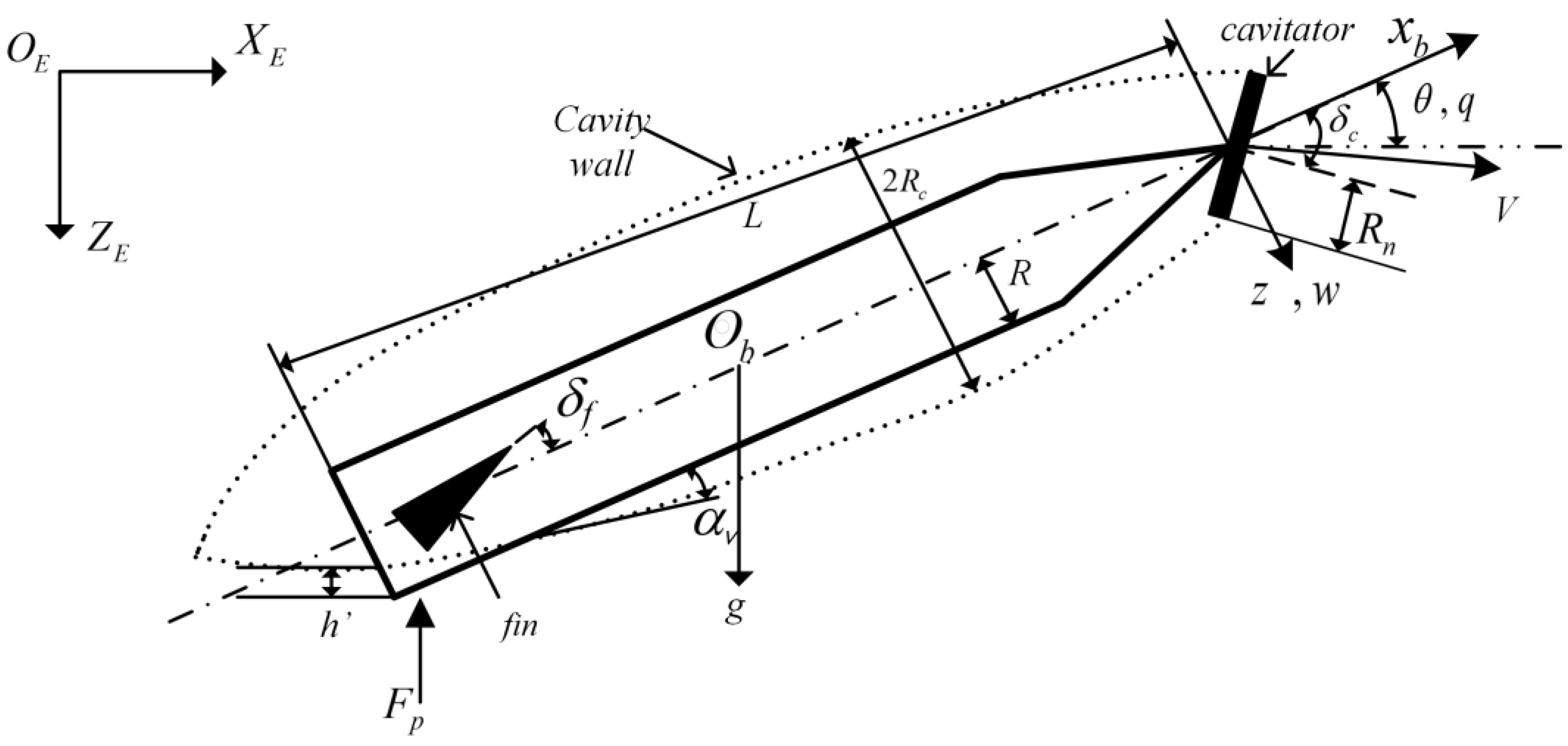
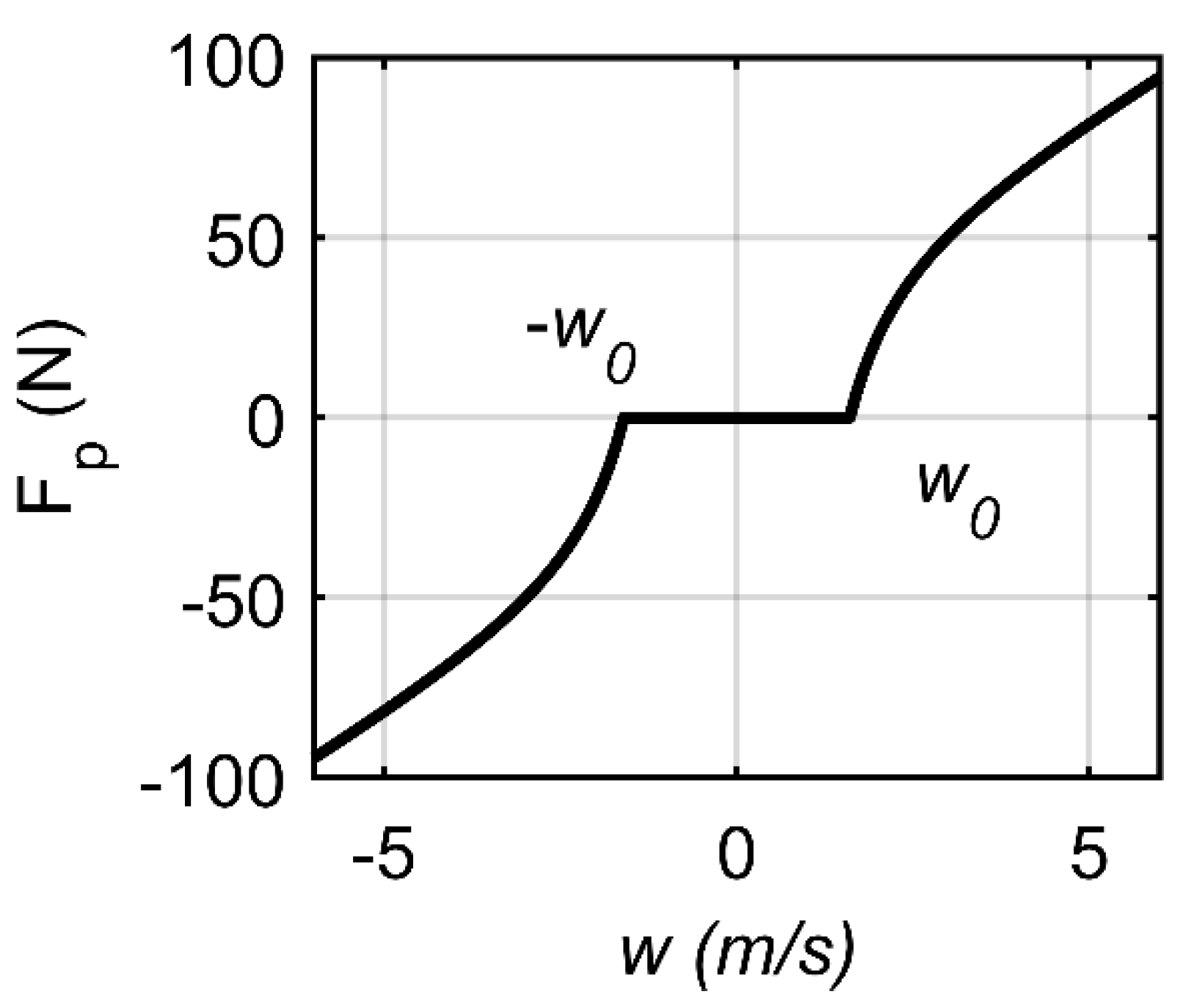
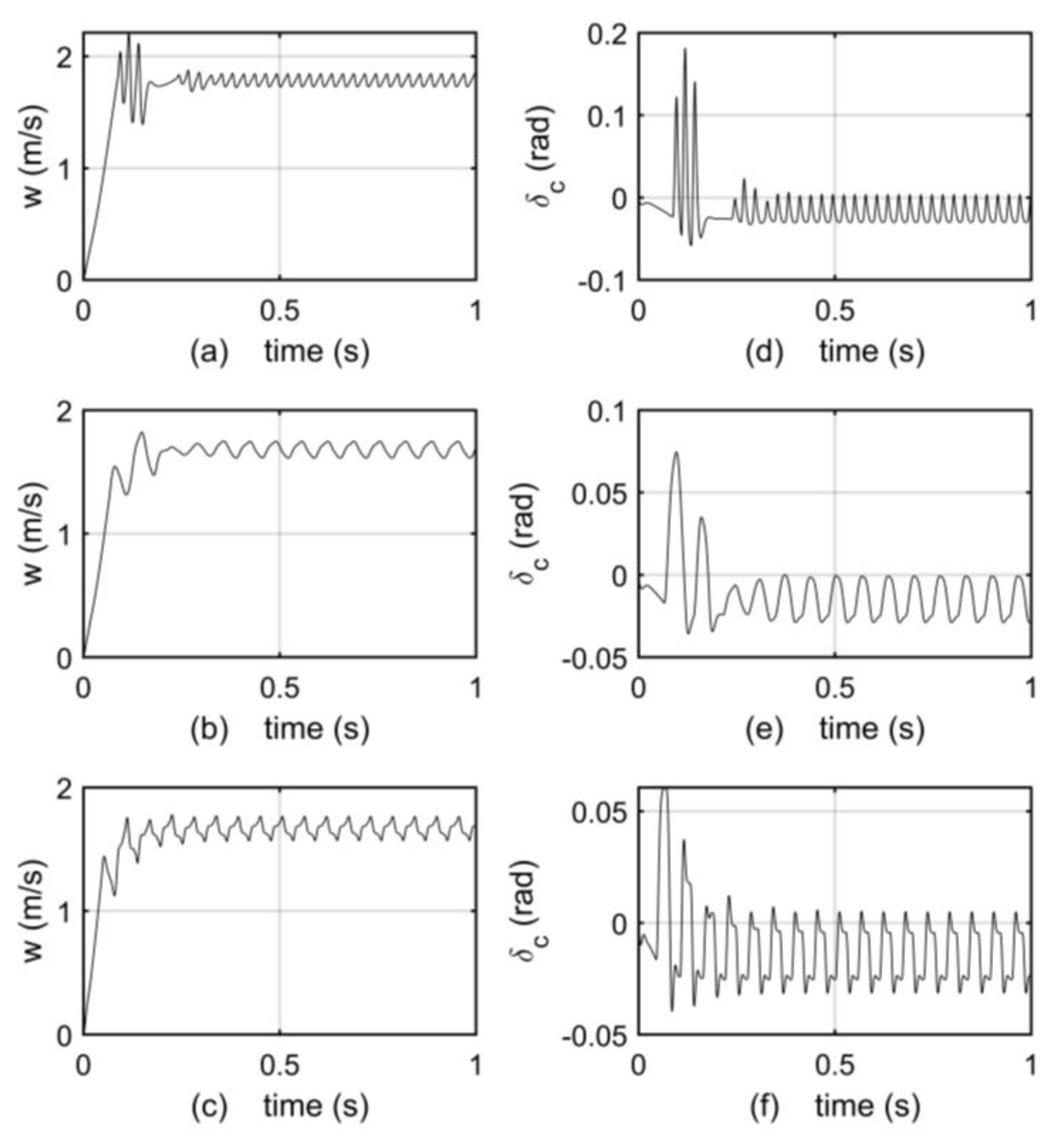
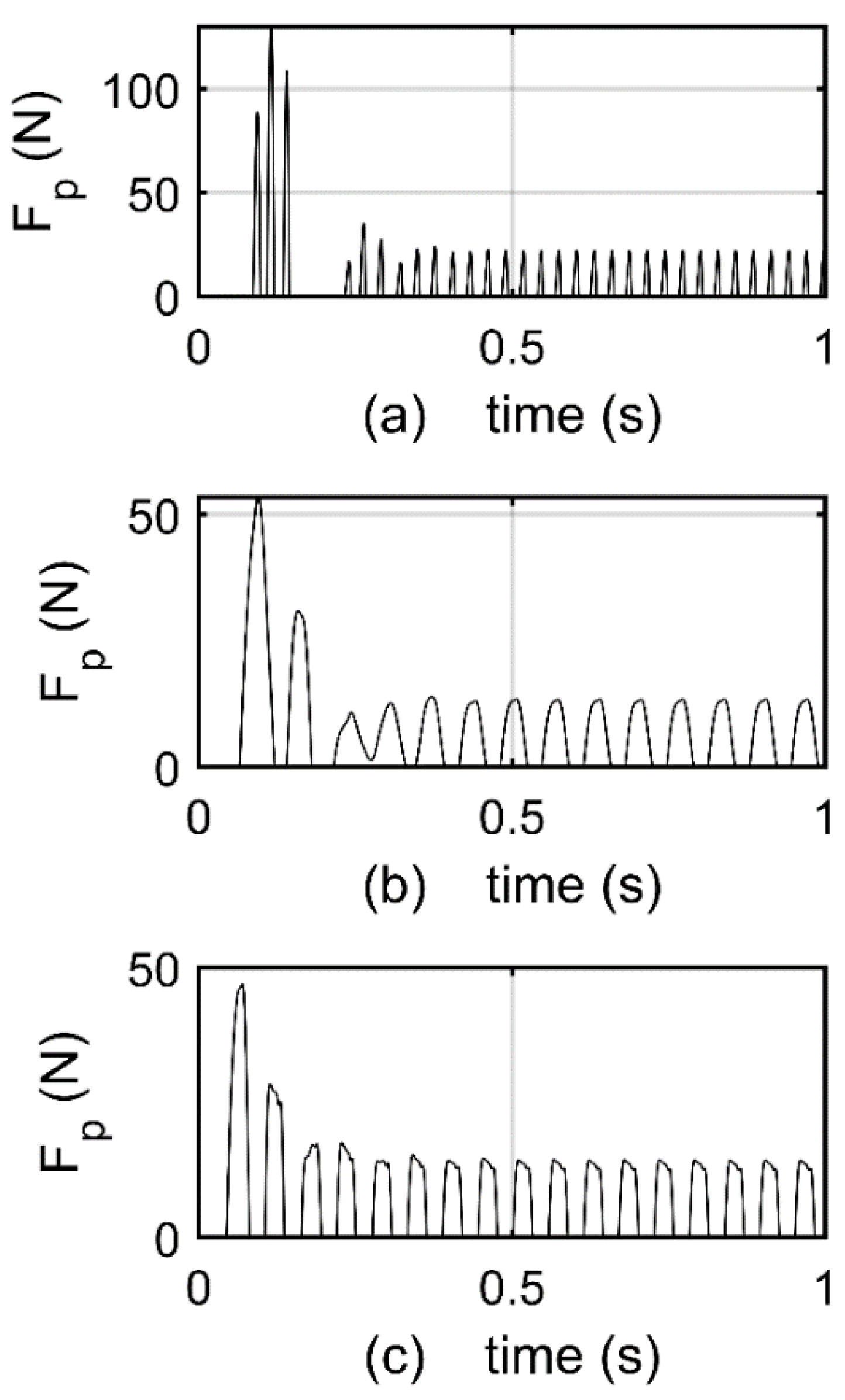
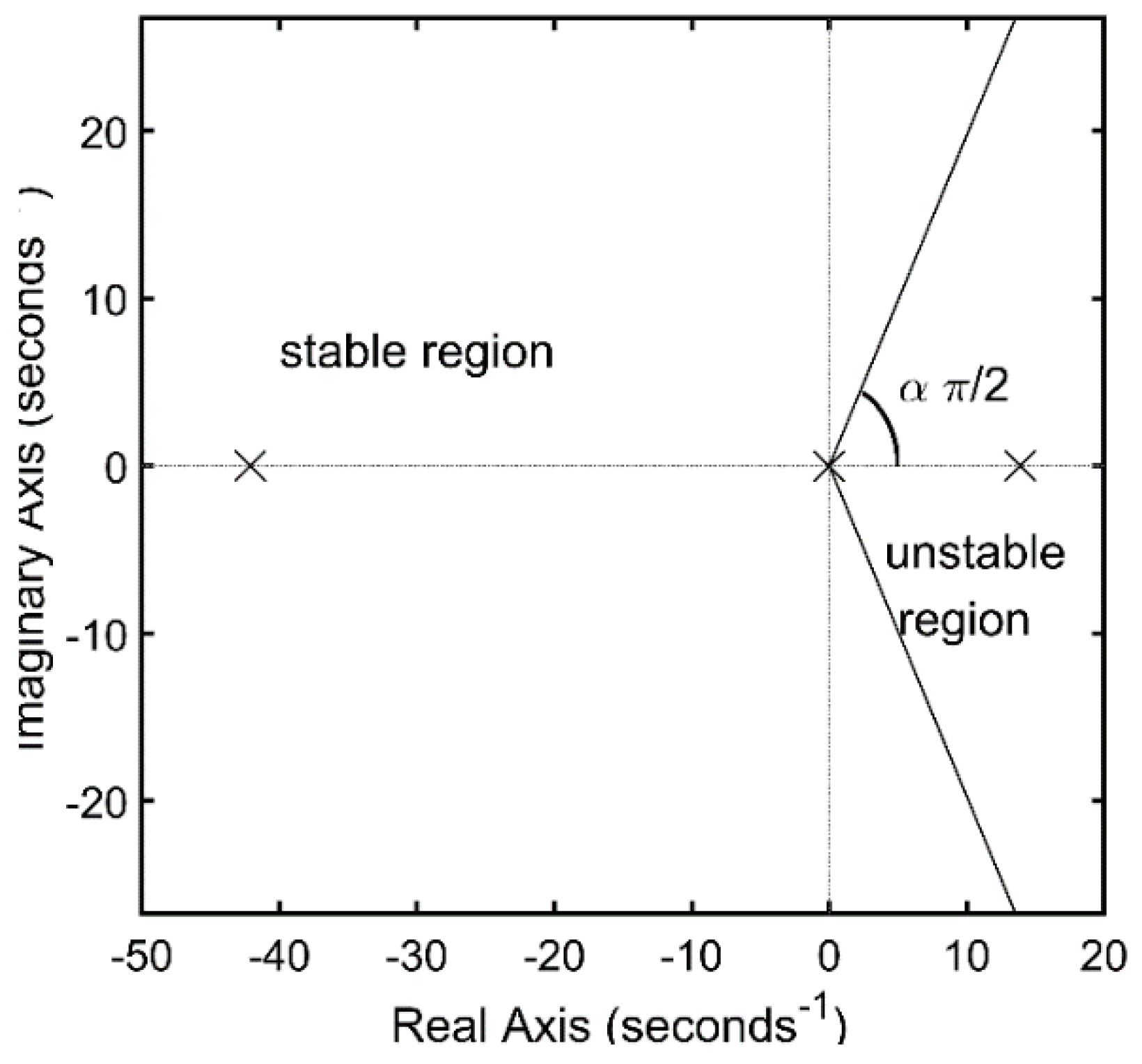
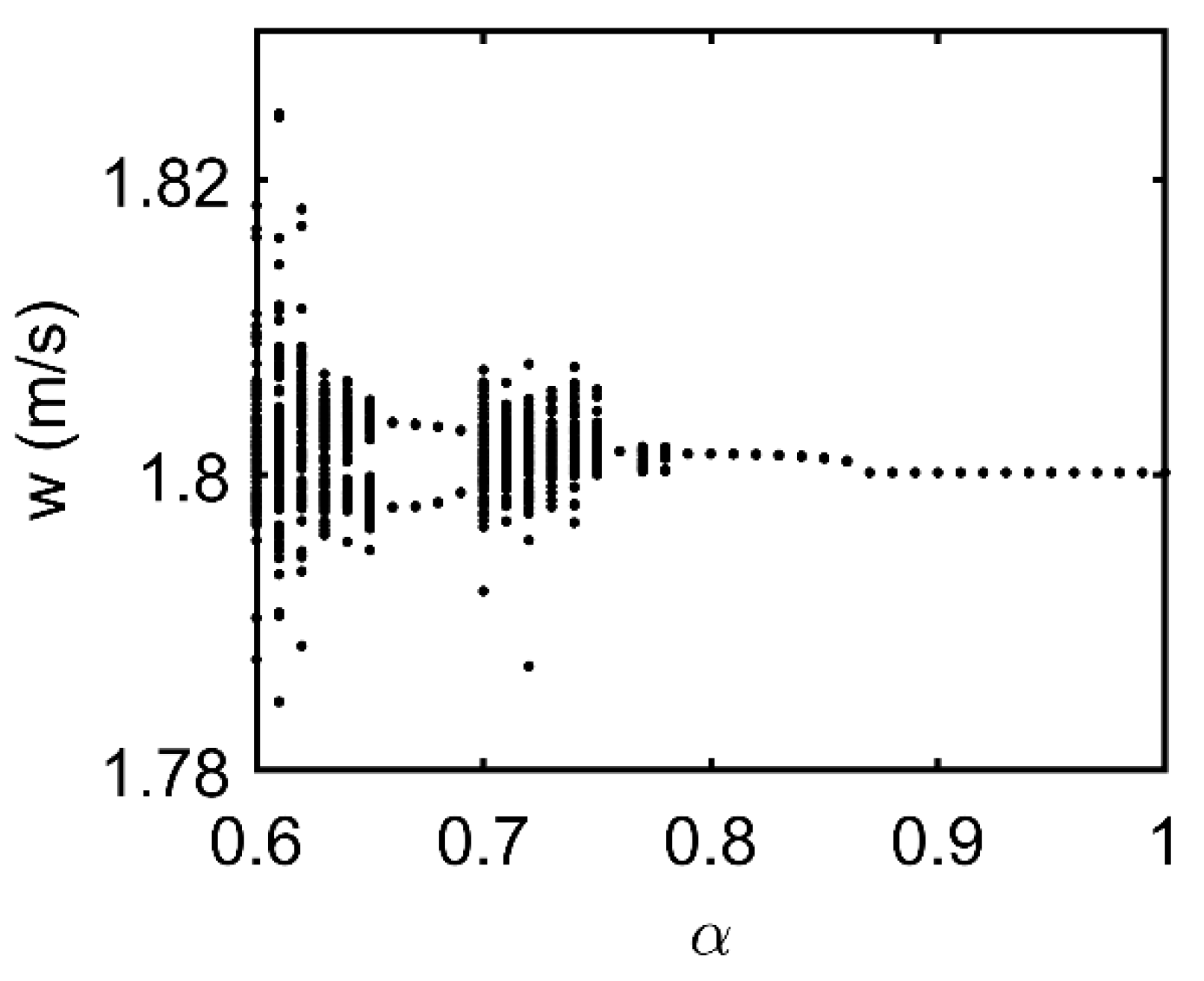
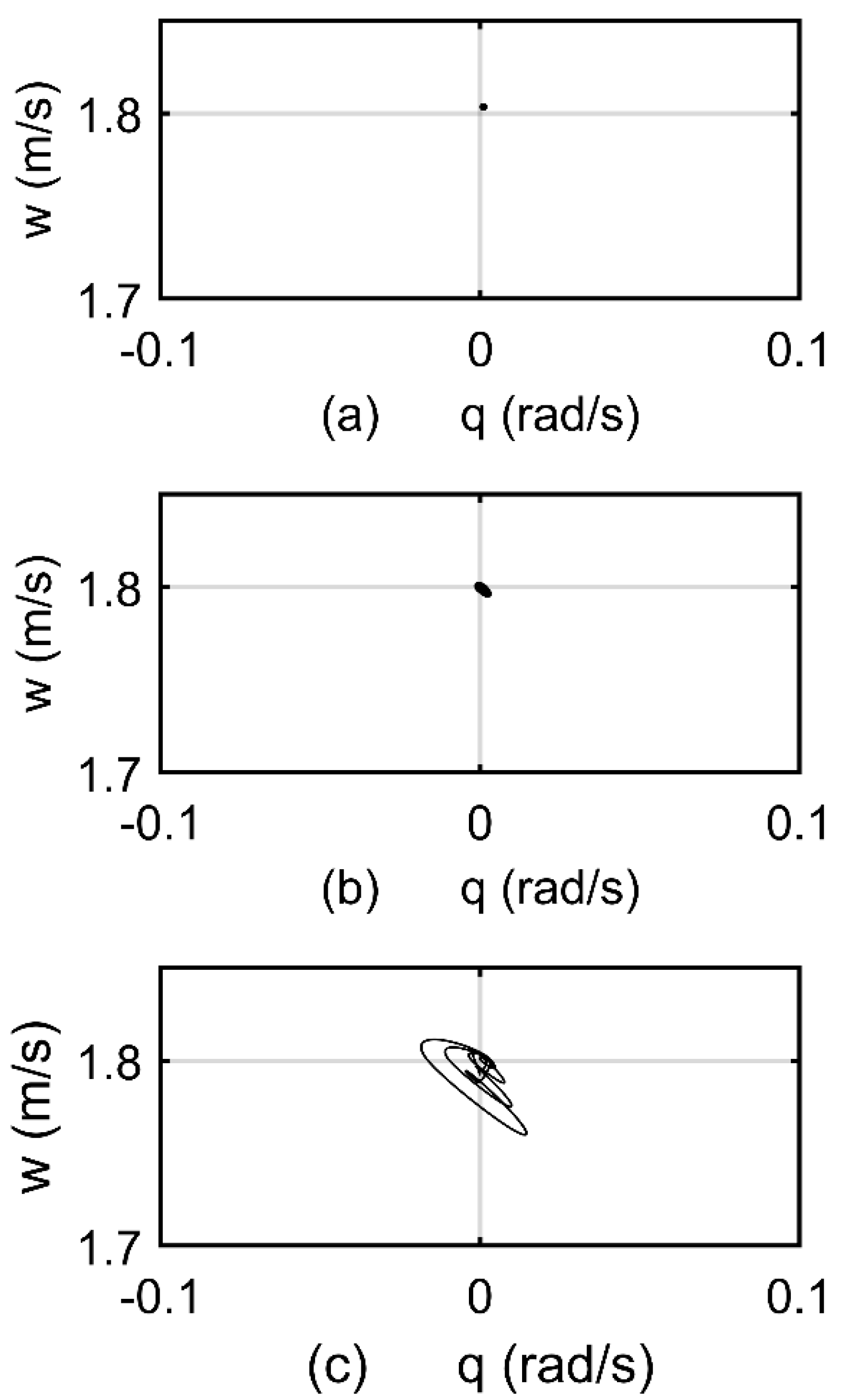
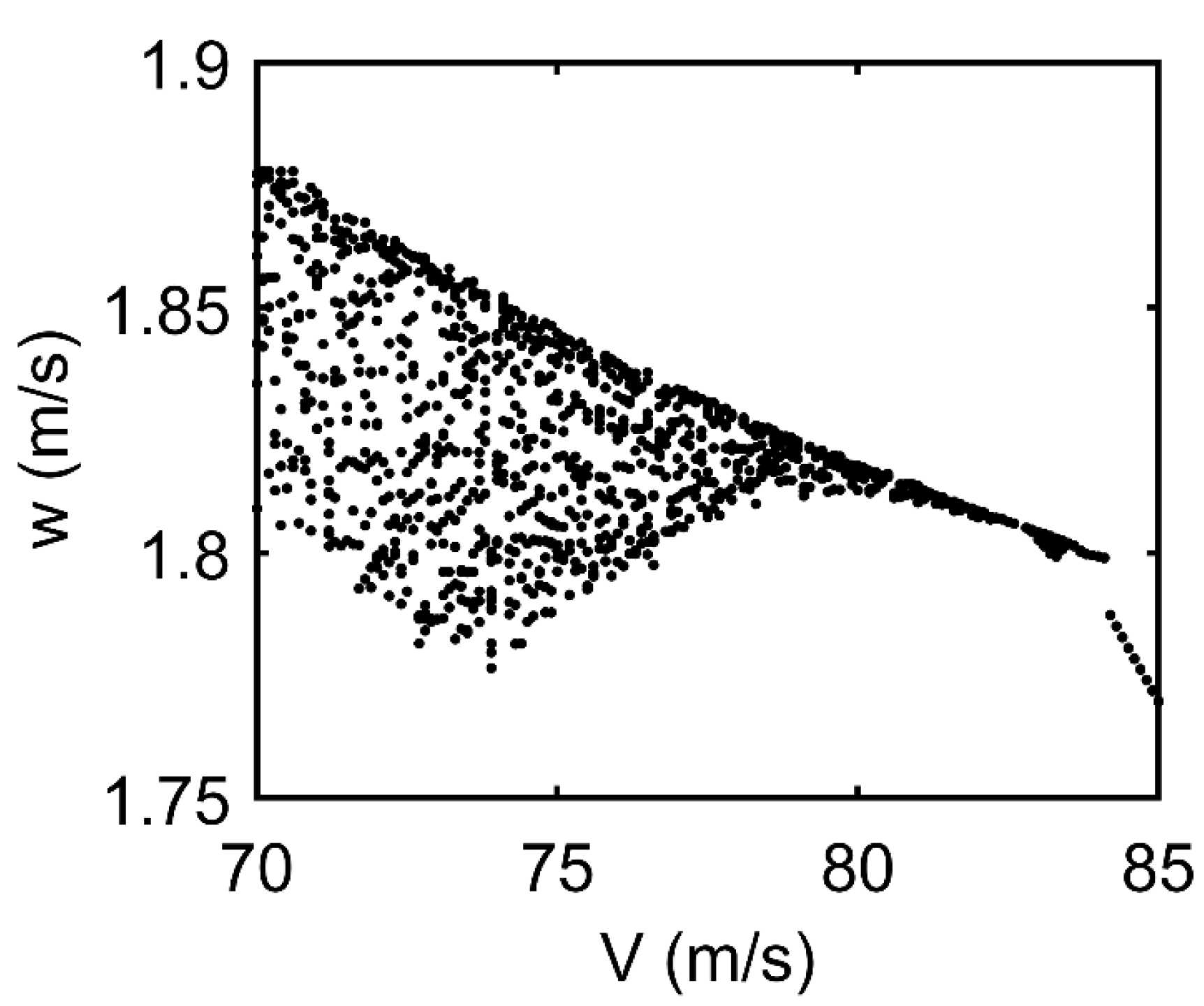
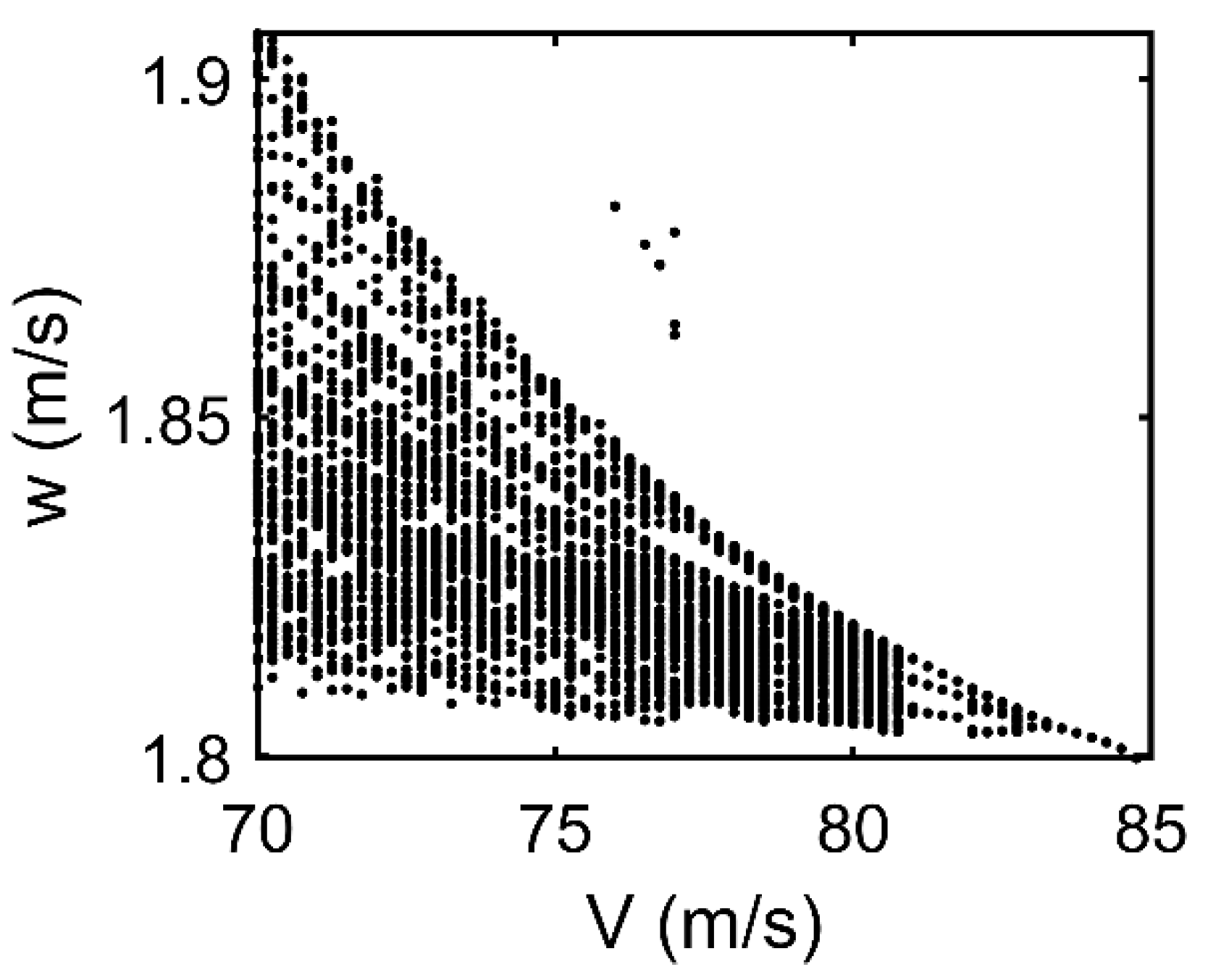

Publisher’s Note: MDPI stays neutral with regard to jurisdictional claims in published maps and institutional affiliations. |
© 2021 by the authors. Licensee MDPI, Basel, Switzerland. This article is an open access article distributed under the terms and conditions of the Creative Commons Attribution (CC BY) license (https://creativecommons.org/licenses/by/4.0/).
Share and Cite
Doan, P.T.; Bui, P.D.H.; Vu, M.T.; Thanh, H.L.N.N.; Hossain, S. Stability Analysis of a Fractional-Order High-Speed Supercavitating Vehicle Model with Delay. Machines 2021, 9, 129. https://doi.org/10.3390/machines9070129
Doan PT, Bui PDH, Vu MT, Thanh HLNN, Hossain S. Stability Analysis of a Fractional-Order High-Speed Supercavitating Vehicle Model with Delay. Machines. 2021; 9(7):129. https://doi.org/10.3390/machines9070129
Chicago/Turabian StyleDoan, Phuc Thinh, Phuc Duc Hong Bui, Mai The Vu, Ha Le Nhu Ngoc Thanh, and Shakhawat Hossain. 2021. "Stability Analysis of a Fractional-Order High-Speed Supercavitating Vehicle Model with Delay" Machines 9, no. 7: 129. https://doi.org/10.3390/machines9070129
APA StyleDoan, P. T., Bui, P. D. H., Vu, M. T., Thanh, H. L. N. N., & Hossain, S. (2021). Stability Analysis of a Fractional-Order High-Speed Supercavitating Vehicle Model with Delay. Machines, 9(7), 129. https://doi.org/10.3390/machines9070129








